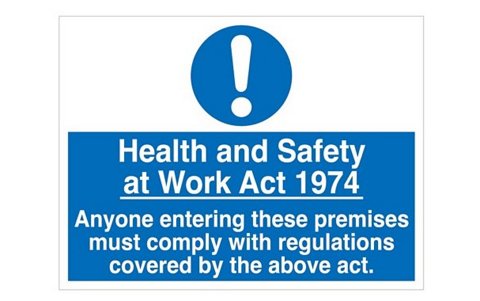The term 'reasonably practicable' is widely used in Health & Safety law.
But what does reasonably practicable mean?
This is key to understanding the general duties under the Health and Safety at Work etc. Act 1974 and many supporting regulations. Under the HSWA 1974, for example, employers must “so far as is reasonably practicable” protect the health and safety of employees by removing or reducing workplace risks.
While regulations may say employers must do what is “reasonably practicable” there is often confusion over what this actually means.

Classic Definition of 'Reasonably Practicable'
Regrettably, “SFAIRP” is not defined in the HSWA 1974. The HSE’s website explains things by quoting Lord Justice Asquith, and reasonably practicable case law, of the 1949 Court of Appeal case of Edwards v National Coal Board.
His Lordship, who it would appear ate a dictionary for breakfast, said “Reasonably ‘practicable’ is a narrower term than ‘physically possible’ and seems to me to imply that a computation must be made by the owner, in which the quantum of risk is placed on one scale and the sacrifice involved in the measures necessary for averting the risk (whether in money, time or trouble) is placed in the other; and if it be shown that there is a gross disproportion between them – the risk being insignificant in relation to the sacrifice – the Defendant discharges the onus on them”.
So, that’s cleared things up then…
Plainer English
In providing a meaning to “reasonably practicable”, LJ Asquith described a scale weighting a risk against the steps in terms of money, time or trouble needed to counter it. In deciding what steps are reasonably practicable to remove or reduce risk, employers must carefully assess the balance between the two.
Much rests on how big the risk is. This depends on the chance and result of it arising, for example, an accident happening and its seriousness. But this risk has to be weighed against other factors. Importantly, money, time or trouble must far outweigh – not balance – the risk.
Cost-Benefit Analysis
In effect, a cost-benefit analysis decides whether steps are reasonably practicable. Under the HSWA employers are not expected to completely remove all workplace risks. They must assess the risk level, what can be done and what it is reasonable to do.
For example, if the risk of injury is very small compared to the money, time or effort needed to remove it, then they could not reasonably be expected to take steps to avoid it.

However, this does not mean you are excused from doing anything. If the risk can be reduced using easier and more proportionate steps, then they would be reasonably practicable.
The words “gross disproportion” mean the cost-benefit analysis is not simple. The decision between risk and safety steps is heavily weighted in favour of health and safety. Only when safety steps are out of all proportion to the risk can they be ruled out.
SMEs
The ability to afford a safety step is not usually a factor in assessing its costs. Indeed, the greater the risk the less weight should be given to cost. In other words, the bigger the risk the bigger the effort needed to reduce it.
The CoA in R v F Howe & Son 1999 confirmed small employers with little money should not get away with a lower safety standard by pleading poverty. However, resources are sometimes considered. For example, a big organisation may reduce risk using the latest engineering controls that a small employer may never be able to afford. Just because risk is reduced in this way does not make it reasonably practicable for everyone.
Summary
Employers do not have to remove or reduce risk if it is technically impossible or if the cost, time or trouble is wildly out of kilter.
However, it can be a fine line deciding what is reasonably practicable. It requires lots of experience and knowledge.
Let a qualified EW Health & Safety Consultant help make the weighty decision!





